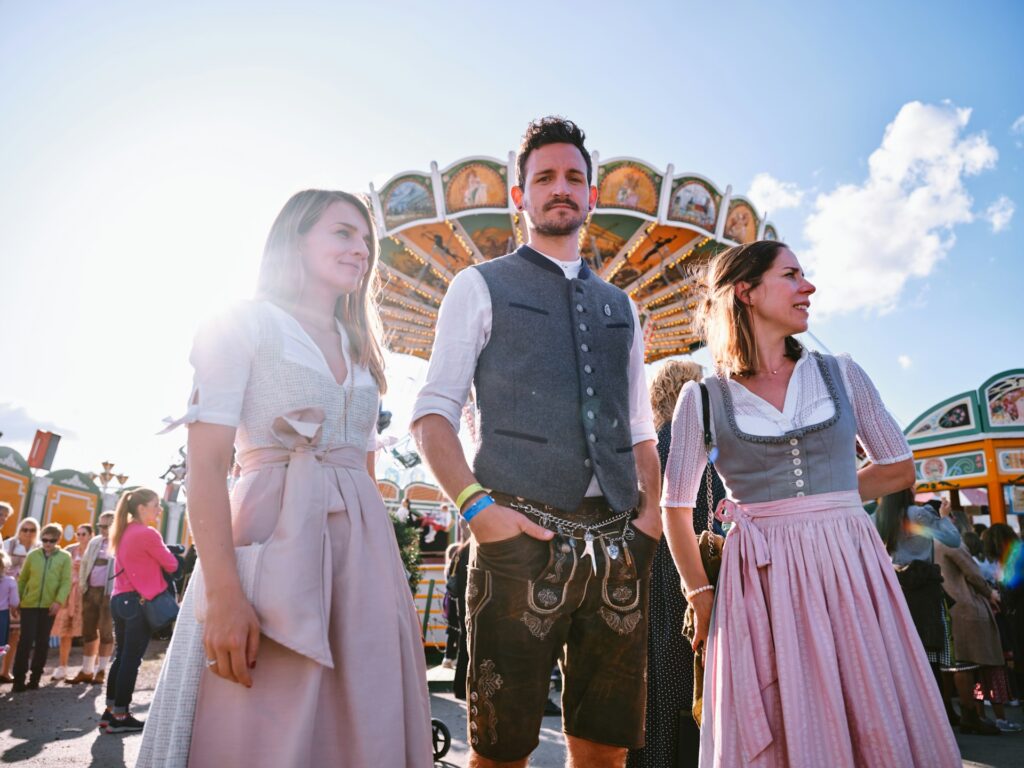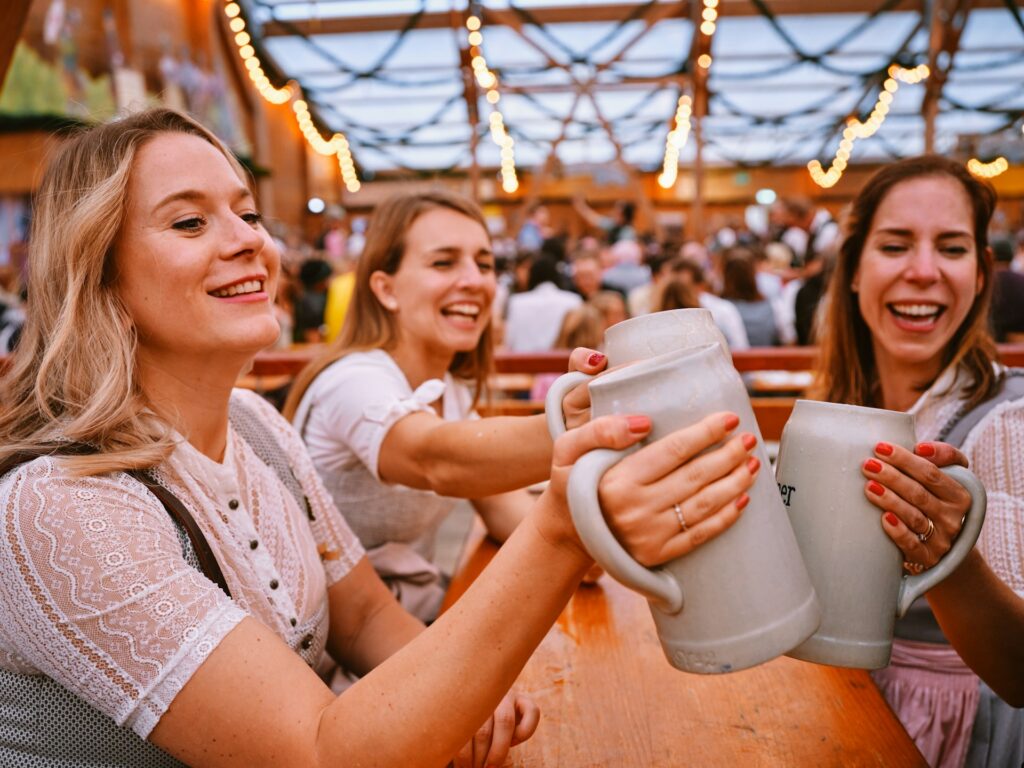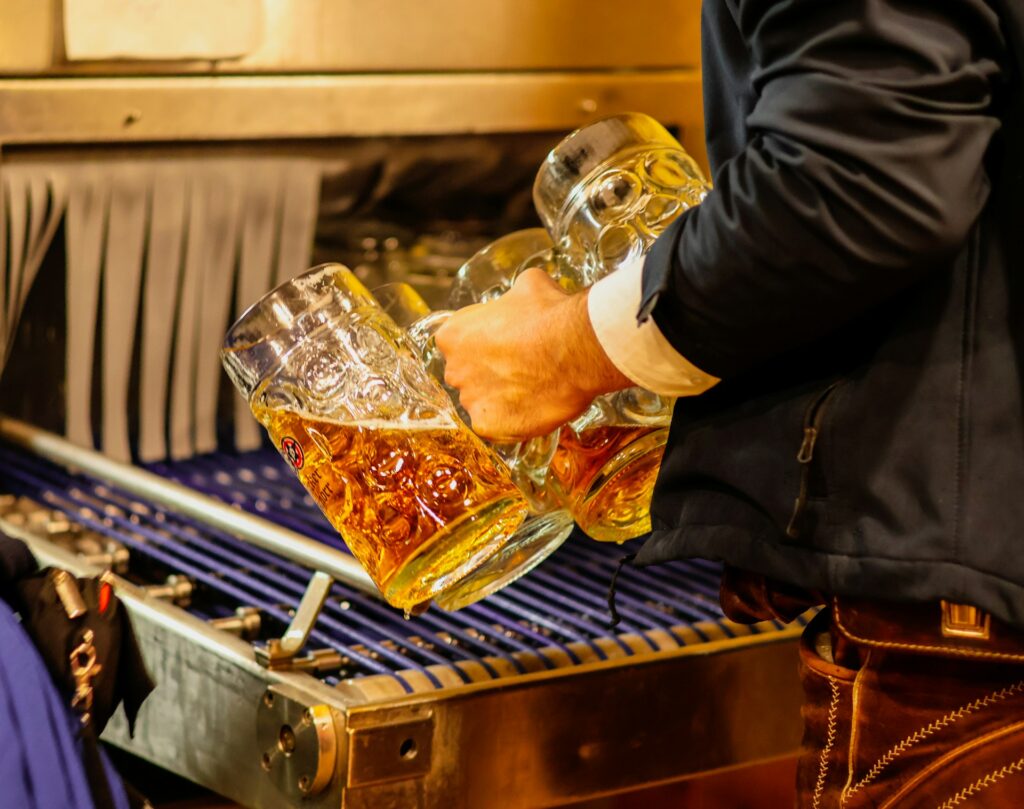Oktoberfest in Munich is a world-renowned festival that attracts millions of visitors from across the globe. With its roots deeply embedded in Bavarian culture, the festival is a vibrant celebration of tradition, beer, and camaraderie.
One of the most iconic symbols of Oktoberfest is the traditional attire: lederhosen for men and dirndls for women. But for those visiting from outside Bavaria, a question often arises: Is it culturally appropriate to wear lederhosen to Oktoberfest in Munich?
Understanding Lederhosen
Lederhosen, which translates to “leather trousers,” are knee-length breeches traditionally worn by men in the Alpine regions of Germany, Austria, and Switzerland.
Historically, they were the working attire of peasants and hunters, valued for their durability and practicality. Over time, lederhosen have evolved into a symbol of Bavarian heritage and are now commonly worn during festivals and cultural events.

The Significance Of Traditional Attire At Oktoberfest
Oktoberfest, which began in 1810 as a royal wedding celebration, has grown into a massive festival that showcases Bavarian culture. Traditional attire plays a significant role in this celebration, with many locals donning their finest lederhosen and dirndls. Wearing these garments is a way for Bavarians to express pride in their heritage and to maintain a connection to their cultural roots.
Visitors & Traditional Attire
For visitors, wearing traditional Bavarian attire can enhance the Oktoberfest experience. It allows them to immerse themselves in the local culture and participate more fully in the festivities. However, the question of cultural appropriation often arises. Is it respectful for non-Bavarians to wear lederhosen, or could it be seen as trivialising a significant cultural symbol?

Respect & Authenticity
The key to wearing men’s lederhosen respectfully lies in understanding and honouring the culture behind it. Here are a few guidelines to consider:
- Quality and Authenticity: Invest in authentic lederhosen rather than cheap imitations. High-quality lederhosen are made from genuine leather and crafted with care. Wearing authentic attire shows respect for the tradition and the craftsmanship involved. ‘Sexy’ versions may be somewhat frowned upon.
- Understanding the Tradition: Take the time to learn about the history and significance of lederhosen. Understanding the cultural context can deepen your appreciation and ensure that you wear the attire with the right mindset.
- Respectful Behaviour: Wearing traditional attire comes with the responsibility to behave respectfully. Oktoberfest is a time for celebration, but it’s important to remember that it’s also a cultural event with deep roots. Avoid behaviour that could be seen as disrespectful or mocking (particularly behaviour fuelled by an excess of beer, such as public urination/copulation etc.).
- Engage with Locals: Engage with Bavarians and learn from them. Many locals appreciate when visitors show genuine interest in their culture. Asking questions and showing curiosity can lead to meaningful interactions and a richer experience.

The Local Perspective
Interestingly, the vast majority of Bavarians welcome visitors who choose to wear traditional attire. They see it as a sign of respect and appreciation for their culture. However, it’s important to approach this with sensitivity. Avoid overly stereotypical or exaggerated versions of the attire, and steer clear of mixing elements from different cultures in a way that could be seen as disrespectful.
The Bottom Line
Wearing lederhosen to Oktoberfest can of course be considered culturally appropriate if done with respect and understanding. It’s an opportunity to immerse yourself in Bavarian culture and participate more fully in the festivities.
Oktoberfest is a celebration of Bavarian heritage, and by approaching it with the right mindset, you can contribute to the festive spirit while honouring the rich cultural traditions that make this event so special. Prost!
Next, let’s think about the best food to pair all that beer with. You know what to do.





